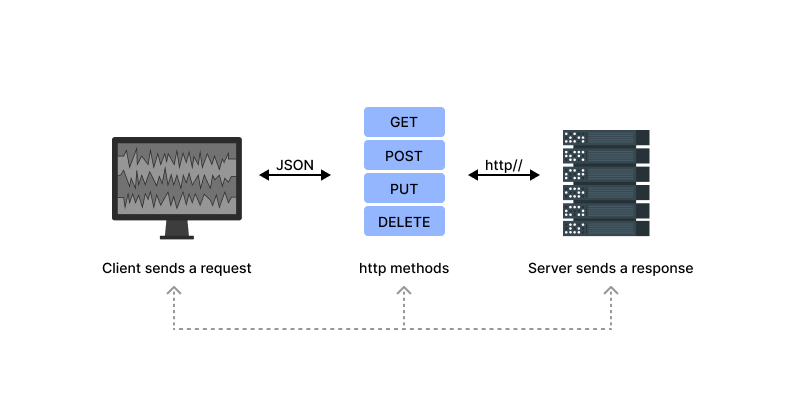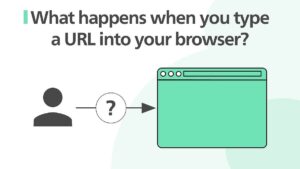When building web applications or working with APIs, you’ll frequently encounter HTTP methods. These methods, also called HTTP verbs, define the type of action you want to perform on a web resource. Each method serves a distinct purpose in how browsers, servers, and APIs communicate.
The four primary HTTP methods — GET, POST, PUT, and DELETE — are at the core of RESTful APIs and web communications. Understanding how each works and when to use them is fundamental for both web developers and those interacting with web services.
Sponsored
In this guide, we’ll break down:
- What each HTTP method does,
- How they are used in different situations,
- The differences between similar methods like
PUTvsPOST, - And best practices for using them effectively.
What Are HTTP Methods?
HTTP methods are part of the Hypertext Transfer Protocol (HTTP) and define the actions the client (usually a browser) wants to perform on a resource located on the server.
When you interact with a website or an API, your browser sends a request to the server using one of these methods, and the server responds accordingly.
Each HTTP method has a specific meaning, and it’s crucial to know which one to use depending on what action you want to perform.
1. The GET Method: Requesting Data
The GET method is the most commonly used HTTP method. It is used to retrieve data from the server without making any changes to the resource.
When you visit a webpage, you’re making a GET request for that page’s HTML. The server responds with the requested data.
Key Points:
- GET is safe and idempotent. This means it doesn’t modify anything on the server and can be called multiple times without changing the result.
- GET requests are typically used for reading or fetching resources.
Example:
GET /products HTTP/1.1
Host: www.example.comThis is a GET request to retrieve a list of products.
2. The POST Method: Sending Data
The POST method is used to send data to the server. It’s most commonly used to submit form data or upload files.
When you fill out a contact form on a website or submit your payment details, you are making a POST request.
Key Points:
- POST is not idempotent. If you send the same data multiple times, you may create multiple resources (e.g., posting a comment on a blog or placing multiple orders).
- POST requests are typically used for creating resources or submitting data.
Example:
POST /comments HTTP/1.1
Host: www.example.com
Content-Type: application/json
{
"comment": "This is a great post!"
}This POST request submits a new comment on a blog post.
3. The PUT Method: Replacing Data
The PUT method is used to update or replace an existing resource on the server. It replaces the resource at the specified URL with the data sent in the request.
Unlike POST, PUT is idempotent, meaning if you make the same request multiple times, the result will always be the same.
Key Points:
- PUT is typically used to update an existing resource or replace it completely.
- A PUT request generally contains the entire data for the resource, not just the fields that need updating.
Example:
PUT /products/123 HTTP/1.1
Host: www.example.com
Content-Type: application/json
{
"name": "Updated Product Name",
"price": 19.99
}This PUT request updates the product with ID 123.
4. The DELETE Method: Removing Data
The DELETE method is used to remove a resource from the server. It’s typically used for deleting records or resources from a database.
Key Points:
- DELETE is idempotent, meaning calling it multiple times doesn’t have a different effect after the first time (e.g., once you delete a resource, it’s gone).
- DELETE requests are commonly used in CRUD operations (Create, Read, Update, Delete) for managing resources.
Example:
DELETE /products/123 HTTP/1.1
Host: www.example.comThis DELETE request removes the product with ID 123.
PUT vs POST: What’s the Difference?
While both PUT and POST can be used to send data to the server, they serve different purposes and should not be confused.
Key Differences:
| Feature | POST | PUT |
|---|---|---|
| Purpose | Create a new resource or submit data | Update an existing resource |
| Idempotent | No | Yes |
| Data Sent | Partial data | Full data |
| Use Case | Form submissions, uploading files | Updating user profiles, replacing entire records |
Best Practices for HTTP Methods
- Use GET for Safe Operations
GET should only be used for retrieving data without causing any side effects. Avoid using GET for actions that alter data on the server (e.g., form submissions). - POST for Creating Resources
POST is ideal when submitting data to create something new on the server (e.g., submitting a new blog post). - PUT for Full Updates
Use PUT when you want to replace an entire resource, like updating a user profile. - DELETE for Removing Resources
DELETE is for completely removing resources. Always be careful with DELETE requests as they are irreversible.
Conclusion
HTTP methods are foundational to web development, enabling you to perform a variety of operations on resources. Understanding when and how to use GET, POST, PUT, and DELETE will not only make your web development more efficient but also improve the design and maintainability of your APIs.



